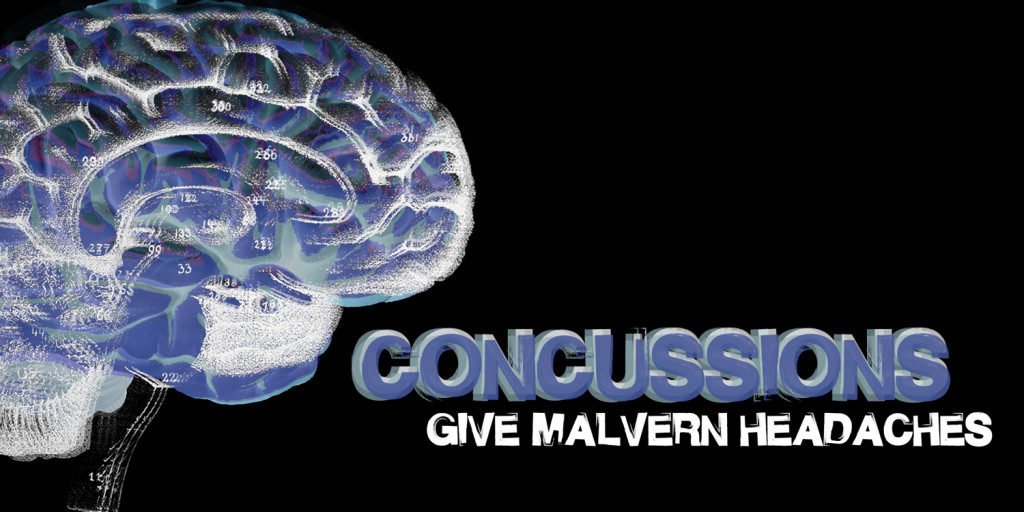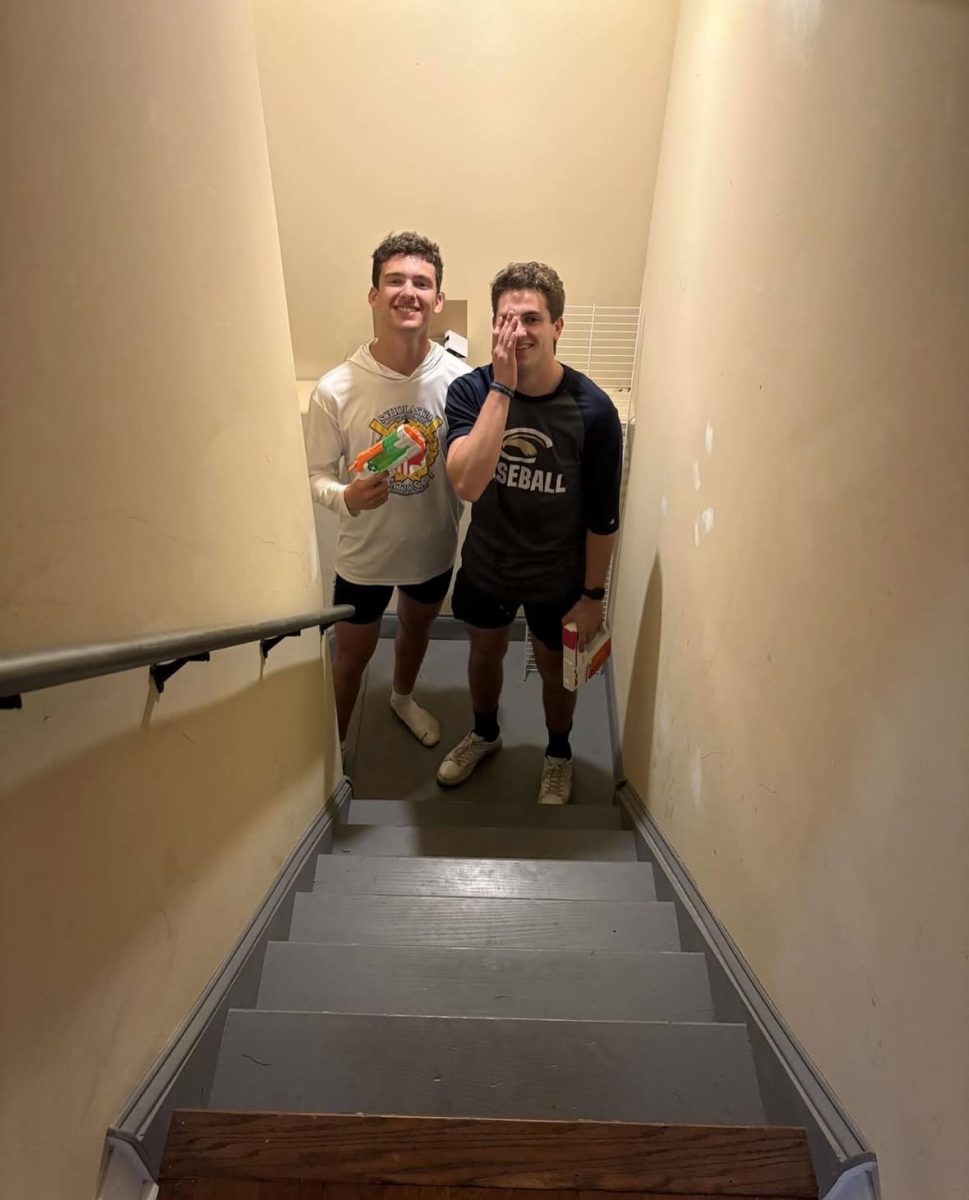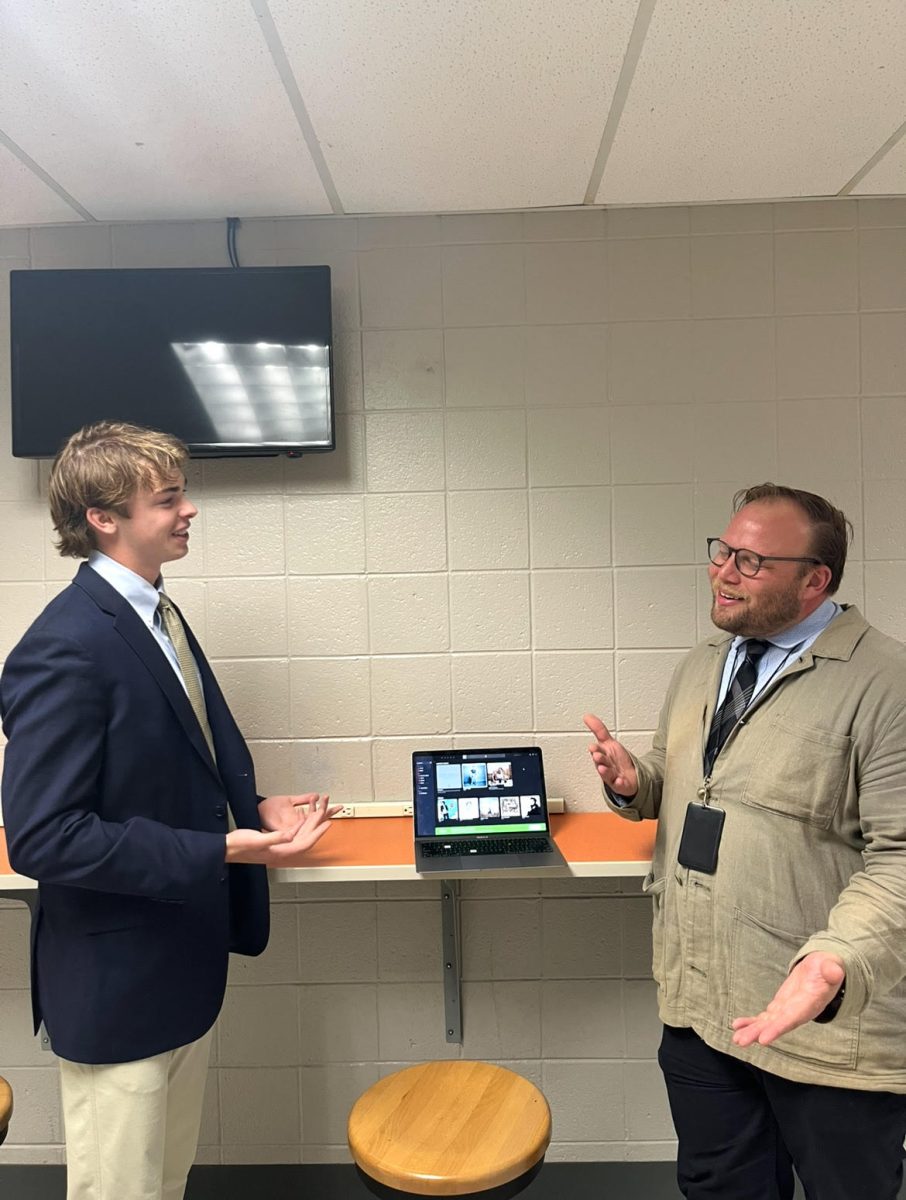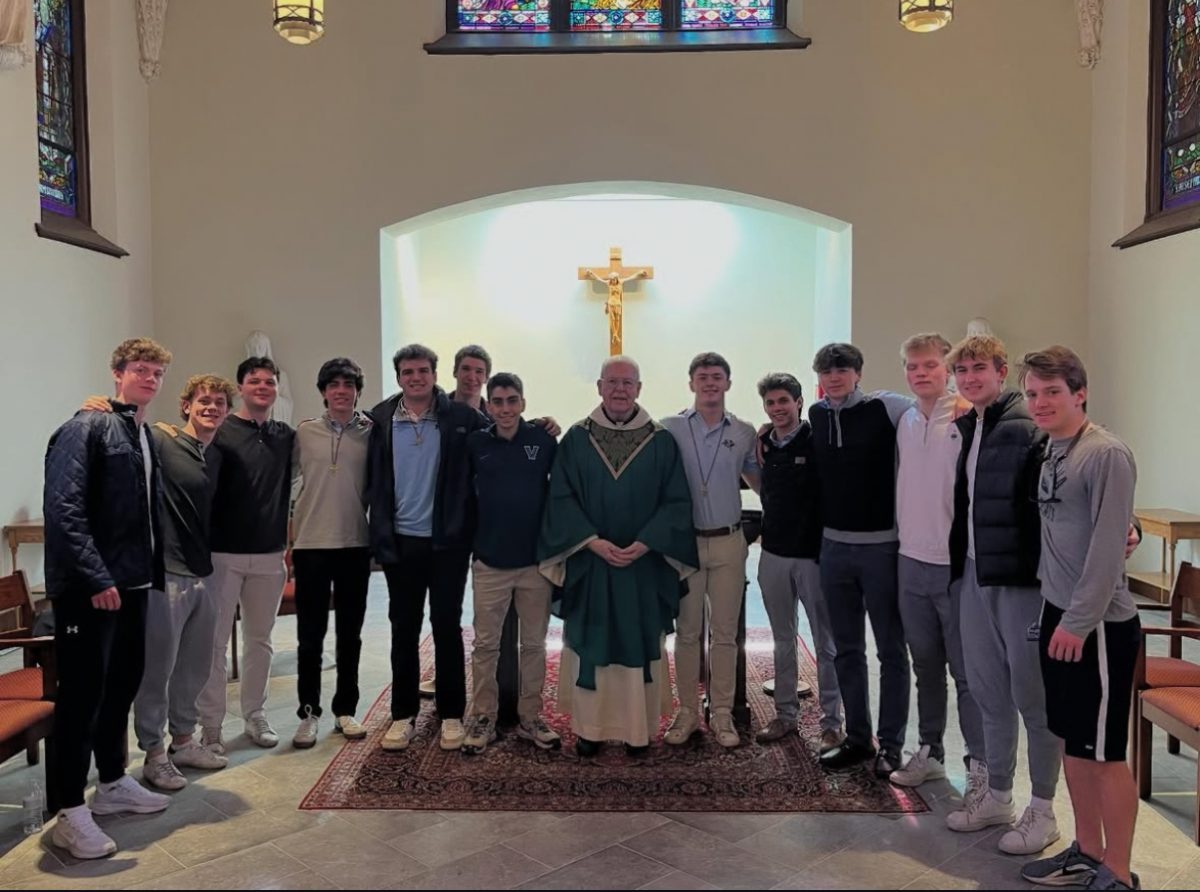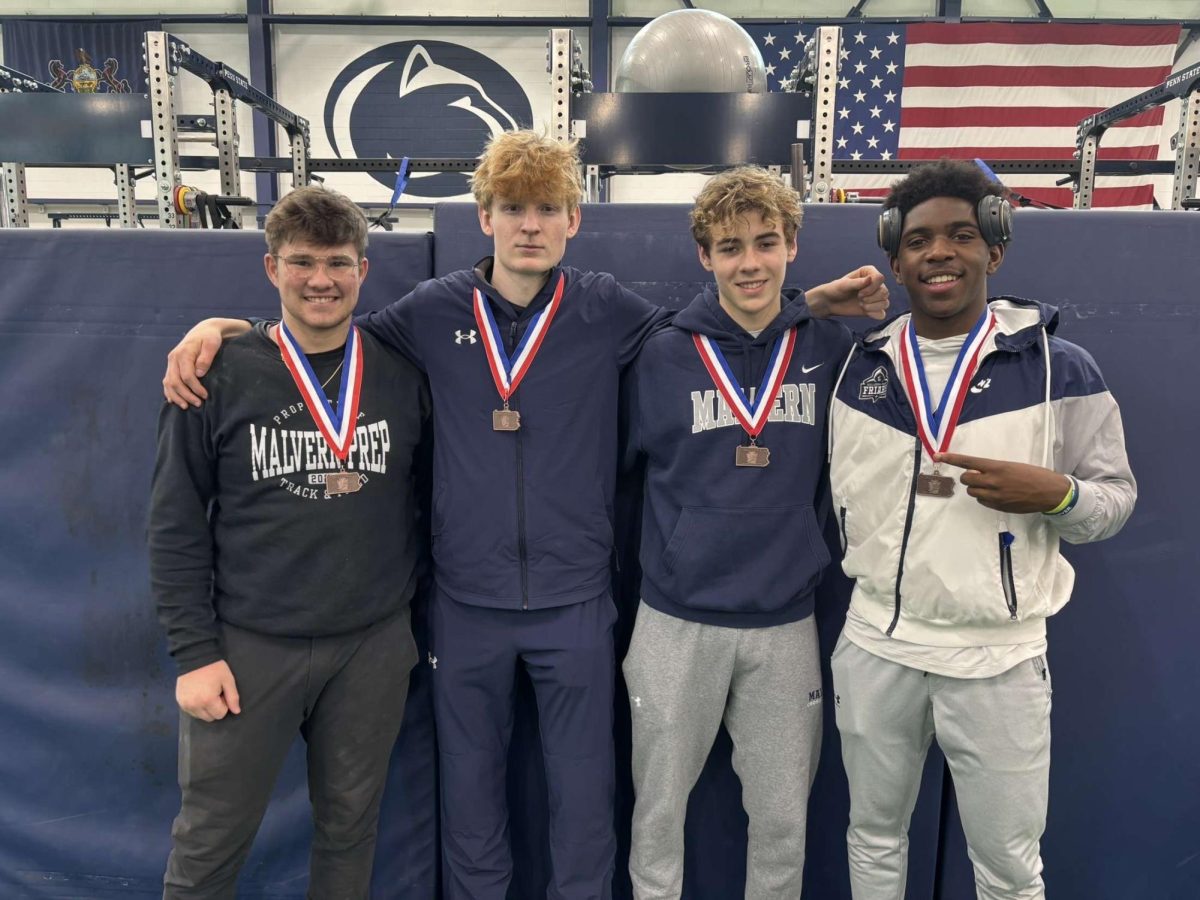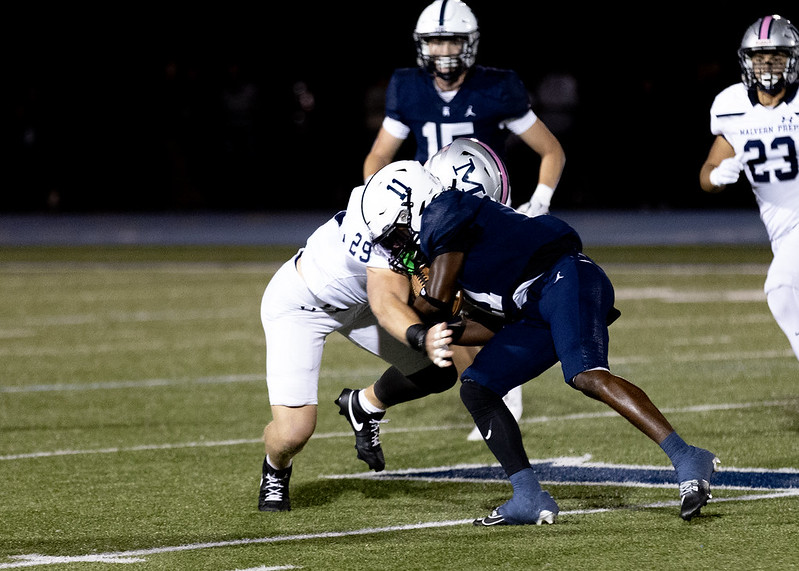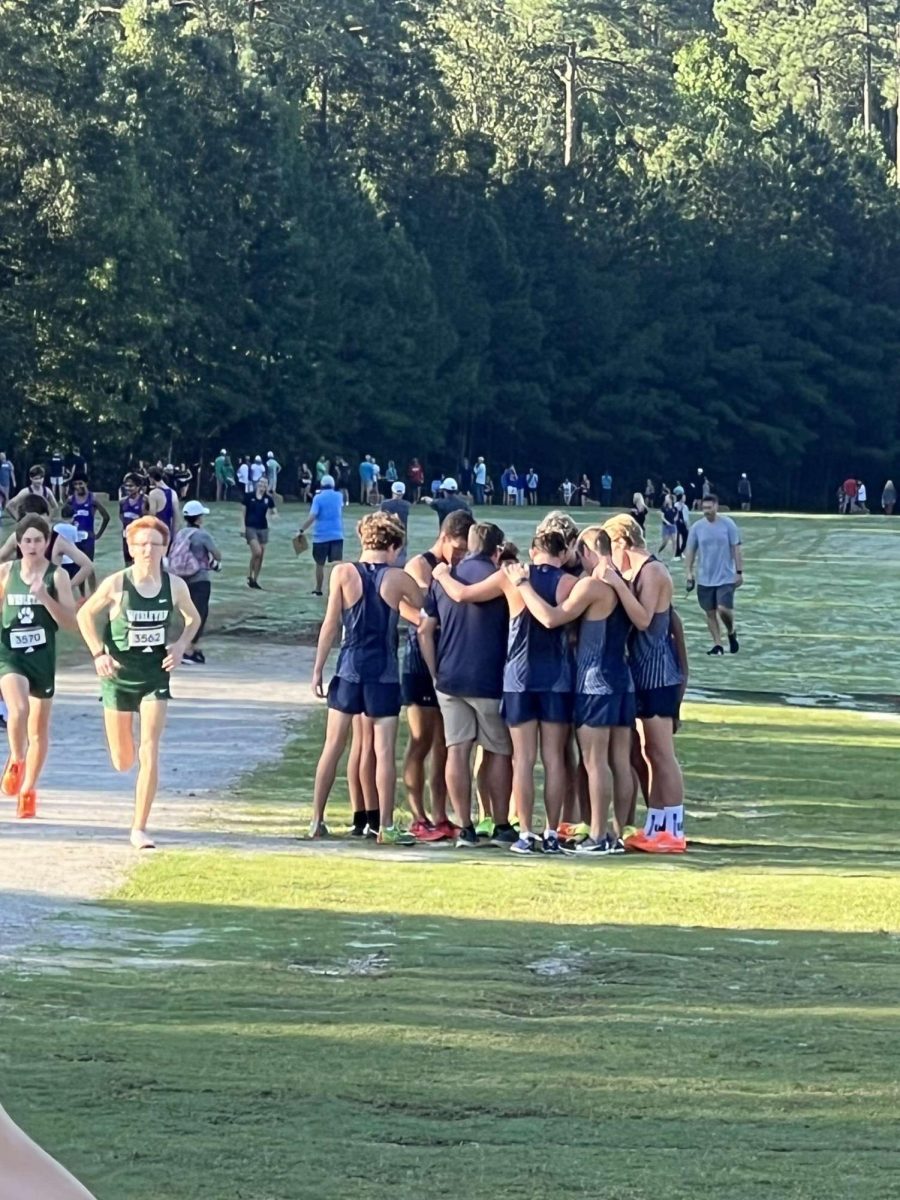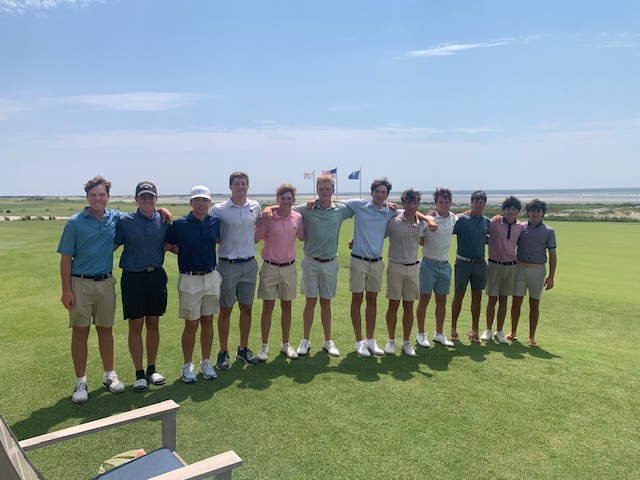Increased knowledge of the head injury has forced both trainers and athletes to become more aware of potential repercussions.
 Junior Cullen Pina unknowingly sustained a concussion before his soccer game on October 7, 2014 and continued to play for the next eight games.
Junior Cullen Pina unknowingly sustained a concussion before his soccer game on October 7, 2014 and continued to play for the next eight games.
It took three weeks for Pina to realize something was wrong.
“It wasn’t like I was trying to hide, I just tripped warming up and everyone started laughing,” Pina said. “My hands were in my pockets and my head flung back, but I didn’t feel, ‘Oh my God my head is killing me.’ I didn’t go home that night and say ‘I feel funny.’”
Mr. William Mills, who leads the Concussion Team at Malvern, said the first 3-5 days after a concussion are the most important in getting it treated.
Every athlete takes a computerized baseline concussion test before a season, according to Mills. “If they are thought to have a concussion I will bring them in for evaluation,” he said. “Balance, eye movement, and thinking ability are all included in the test.”
Pina said he gradually felt the onset of headaches, but it wasn’t until he really felt dizzy after a game that he went to see Mills.
“The program will shut down if it thinks no one is taking it,” Pina said. “It took me four times to actually finish the test because my scores were so low that it kept shutting off. Once I finally finished the results came back and said I had a very, very bad concussion.”
Concussed athletes are sent to the Sports Medicine program at CHOP to get treated by either Dr. Matthew Grady or Dr. Christina Master. Mills said he is working with Master on his doctorate dissertation team.
“In addition to Dr. Master, we also have a connection, Ted Gangley ’82, who is the Director for CHOP’s Center for Sports Medicine and Performance,” Mills said. “As an alumni he helps in any way we need. It would normally take two weeks to get an appointment but our students can get them in two days.”
Just like an arm sling is prescribed to a patient with a shoulder injury or a boot to a patient with a sprained ankle, a “black box” is prescribed to students with a concussion, according to Mills. The black box consists mainly of resting in a dark room and watching TV. Things like reading, using a phone, or doing homework are all off limits.
 “The only two methods to treat a concussion are rest and sleep,” Mills said. “Sleep is especially important because it allows body to focus its energy on healing the brain. I have a lot of students who will sleep 12 hours a day, which is probably good anyways because students here are exhausted to begin with.”
“The only two methods to treat a concussion are rest and sleep,” Mills said. “Sleep is especially important because it allows body to focus its energy on healing the brain. I have a lot of students who will sleep 12 hours a day, which is probably good anyways because students here are exhausted to begin with.”
The concussion team led by Mills has four other faculty members – School Psychologist Dr. Sayers, Learning Specialist Mrs. Francine Cox, Middle School Learning Specialist Mrs. Carissa Casey, and School Nurse Mrs. McGettigan. The team shares responsibilities to help the student through all facets of recovery.
Mills is tasked with the most important, and possibly most difficult job: diagnosing and identifying concussions. Mills estimates that 40-50 percent of concussions fly under the radar because the athlete either doesn’t know he has a concussion or he knows and just ignores it.
Assistant Athletic Trainer Mike Reinhart and Mills attend every game. “If we see a big hit we take the player out right away,” Mills said. “That being said, we can’t see everything so often times it comes down to the player to be able to identify and take himself out.”
In addition to Mills, Reinhart and the players, the coaches also play an important role in identifying concussions. As a Master Trainer for Heads Up Football, Head Coach Aaron Brady said he is very knowledgeable on concussions. Additionally, all of the coaches on the football team are Heads Up certified.
According to their website, Heads Up Football is a comprehensive program developed by USA Football to advance player safety in the game of football.
“It’s my job as the coach to create an environment where players know if they get a concussion, they’re out of the game,” Brady said. “I know they want to play, but trying to be the tough guy and play through a concussion is just gonna hurt you in the long run.”
“Your brain is too important,” he said.
 In the past 5 to 7 years, understanding of concussions has increased exponentially. Ninety percent of what we know about concussions was learned in the last 5 years, according to Dr. Patrick Kersey. Kersey, who is Medical Director of USA Football and former Director of Medicine for the Indianapolis Colts, said this increased knowledge has caused backlash across the country against contact sports, specifically football.
In the past 5 to 7 years, understanding of concussions has increased exponentially. Ninety percent of what we know about concussions was learned in the last 5 years, according to Dr. Patrick Kersey. Kersey, who is Medical Director of USA Football and former Director of Medicine for the Indianapolis Colts, said this increased knowledge has caused backlash across the country against contact sports, specifically football.
“Concussions are not a football problem. They are not related to the sport of football. Concussions can happen in any walk of life,” Kersey said. “You are 10 times more likely to get one while riding a bike or jumping on a trampoline than you are playing football.”
However, others criticize this comparison.
Orthopedic surgeon and sports medicine specialist David Geier stated that when the comparison is narrowed down to just boys, the concussion rates become relatively even. When the study is narrowed down further to boys aged 14-19 the concussion rates while playing football actually exceed those while riding a bike.
The mainstream media has latched on to the story of concussions. The feature film Concussion, starring Will Smith, has made national headlines since its December release. The film profiles pathologist Dr. Bennet Omalu as he researched brain damage in football players who suffer repeated concussions in the course of normal play.
“A lot of recent information has come out trying to damage the sport of football and that there’s been a big cover up in the medical world but that’s simply not true,” Kersey said. “As a practicing physician and clinician in the NFL who worked closely with players during those times it is offensive to me to be projected in that vein.”
Across the country many players and parents are making the decision to stop playing football out of fear that it is not a safe enough sport. Prominent figures like Barack Obama and Lebron James have said publicly that they won’t let their sons, or hypothetical sons, play football.
Some players at Malvern have also considered the potential consequences of playing the game they love.
 “I was always ready to give the game up if I had another big concussion,” senior football co-captain Patrick Finley said.
“I was always ready to give the game up if I had another big concussion,” senior football co-captain Patrick Finley said.
In 8th grade, Finley sustained a major concussion. He said if he received another one he would simply stop playing for the safety of his brain.
Despite garnering attention from colleges, Finley told Brady during his junior year that he did not want to pursue football at the next level.
“One of the biggest reasons why I don’t want to play college football is because I would probably play linebacker and they’re so prone to head-to-head collisions,” Finley said. “I don’t want to screw up my brain for the rest of my life. I just feel there’s no way around it. You can change the technique but you can’t change the game.”
Kersey said he believes if a concussion is treated appropriately and recovery is seen to full resolution, then he considers an athlete fully cleared to play. Malvern’s football team has instituted a path to play policy in order to fully heal a concussion, according to Brady.
“Once a player has a concussion they can’t come back until five days after symptoms subside,” Brady said. “So the players know if they’re diagnosed with a concussion there’s a good chance they miss the next 1-2 games.”
Finley said at Malvern this possible missed playing time is what causes players to hide concussions.
“If you get your bell rung or something, they don’t want to miss plays. So they won’t say anything,” Finley said. “They don’t want to miss one or two games of a game that means so much to them. Sitting on the sideline sucks and you can’t see the injury, which makes it worse.”
Pina learned the hard way what happens when a concussion goes untreated.
He resumed classes the week before Thanksgiving break, nearly a month after his diagnosis.
“During the time between Thanksgiving and Christmas break I would just come into school and sit in for two or three classes then go back home,” Pina said. “I couldn’t participate in classes or take any assessments. I would just sit.”
Pina said that he got a lot of support from Cox in making sure teachers understood his limitations and don’t stress him out.
“Once a student is diagnosed with a concussion, it is my job to communicate with the teachers and keep them updated on the progress the student is making,” Cox said. “Most teachers are very receptive, but sometimes they can get nervous if they haven’t been updated in awhile.”
Pina said the hardest part of recovery was the inactivity.
“I’m used to playing soccer all the time and other activities, so just sitting around I was ridiculously out of shape,” he said
Dr. Sayers said that students who are so used to being very active find it difficult to take the necessary time to rest. “In some cases students could have depression symptoms flare up or experience depression-like symptoms,” she said.
Teachers and classmates noticed a change in Pina.
“You could see the wheels turning and just not catching anything,” Pina said. “You could see my eyes were really cloudy. I would just look really confused or really tired.”
As the recovery dragged on, Pina’s frustration built up.
“I asked the doctors why this was taking so long. They said the first weeks are the most important in healing – and I played the first two weeks,” Pina said. “So the healing was really, really delayed.”
Pina slowly started to transition back into class, but he said he went through the whole second quarter without doing a single assignment.
“I met with my counselor Ms. Randle at the beginning of the third quarter who basically took all non-essential classes off my schedule, basically shaving my day down to three classes,” Pina said.
Although Pina started taking notes and participating more in class, he still didn’t take tests that counted towards his grade.
“We would use my grades to gauge the progress I was making,” Pina said. “I continued to meet with Mrs. Cox and she helped me communicate with teachers, who were all extremely accommodating. No one was forcing anything.”
By the end of the third quarter Pina said his grades were back to where they normally were. The only problem was that he just spent a good portion of the last two quarters not getting graded.
“It was Dr. Master who first brought up to me the idea of repeating junior year,” Pina said. “I thought there was no other option because I wanted to get into a good college and I wouldn’t be able to with the grades I had.”
Pina said he spent the final months of the year just resting and preparing to start back up with classes the following year.
“It was predominantly an academic decision, but I want to play soccer in college so having an extra year for soccer as well isn’t a terrible thing,” Pina said. “If I was gonna take an extra year it was only going to help. There was no downside to it.”
Before this experience, Pina said he knew little to nothing about concussions. Looking back on it, his soccer history might explain why his recovery process was so long.
“I played defender for most of my career, but when I came to Malvern as a sophomore I was shifted to goalie,” Pina said. “Last year I was moved back to defense and since I was the biggest guy, my main job was to win headers. After games I would get headaches and I just assumed it was from not being used to heading the ball.”
These constant headers in soccer can be equated to the constant head-to-head collisions lineman experience in football at the beginning of each play.
“Maybe after each individual game you’ll be ok, but after four years all the small hits add up,” Finley said.
Despite the extended recovery, 80% of people come back from concussions within two weeks, Pina was able to come back the next year at full strength.
“Life’s back to normal, playing soccer, playing basketball,” Pina said. “I actually did better the 1st quarter of this year than last year.”
In hopes of strengthening concussion prevention Mills is focusing his doctoral research on the connection between posture control and concussions.
“We’re trying to work on a device that will detect the force of a hit – which allow us to detect concussions without just visual aid,” Mills said.
Mills has also partnered with Temple Medicine to try to develop a biomarker based on a blood test on players. If the biomarker is elevated, it will indicate that a player had a concussion. Mills said he plans to test it on the hockey team.
Mills is committed to research in hopes that he will make athletes at Malvern as safe and educated as possible.
“Sometimes it makes me nervous because I’m learning so much now,” Mills said.


